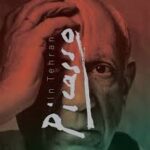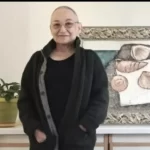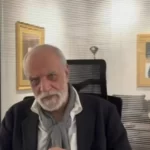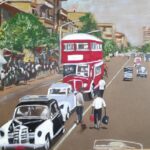
introduction From the perspective of art philosophy, the advent of artificial intelligence (AI) in the field of art presents new challenges. Fundamental questions arise: Does AI-generated art possess authenticity and artistic value? Can artistic creation without human intervention hold artistic meaning?
While some critics argue that AI can democratize access to art by facilitating the selection of artworks, others raise concerns about its impact on artistic authenticity.
In today’s world, technology and art are increasingly converging. AI, which was primarily recognized in industrial and scientific fields, has now entered the world of art, particularly in curation. Art curation refers to the process of selecting, organizing, and displaying artworks, a task traditionally carried out by human curators. However, intelligent systems and complex algorithms have now become part of this process.
This article examines curدر مورد rent trends in AI’s role in art curation, including its applications in art creation, selection, organization, and digital exhibition development. Additionally, it explores the perspectives of critics and art experts regarding these developments, particularly from the standpoint of art philosophy and ethics. Finally, we will consider questions such as “Can AI understand art?” and “Are machines capable of creating authentic artworks?”
- Current Trends in Art Curation and Artificial Intelligence In the contemporary art world, AI has emerged as an innovative and influential tool across various domains. Specifically, in art curation, AI goes beyond mere artistic creation and assists curators and artists in improving the processes of selection, classification, and exhibition. This section highlights some key trends in the use of AI in art and curation.
2.1 AI in Art Creation AI is now playing a major role as a creative tool in generating artworks. Advanced algorithms such as neural networks and deep learning can create images, music, and even poetry. These technologies analyze existing artistic data to autonomously generate new works that often resemble human-made art in aesthetics and concept.
Notable examples of AI-generated art include projects like DALL·E and Artbreeder, which use AI algorithms to produce unique images based on textual descriptions. These tools enable artists to create innovative visuals without requiring extensivت technical expertise in design.
2.2 Digital Curation and AI Beyond creating art, AI is also employed in digital curation. Algorithms analyze data and characteristics of various artworks to suggest the best selections for exhibitions or online galleries. These systems can identify hidden patterns in artistic data and categorize artworks based on color, style, technique, and thematic connections.
Projects like Google Arts & Culture utilize AI to explore vast art collections, offering visitors a unique experience. In such platforms, AI assists curators in developing dynamic and diverse exhibitions tailored to different audiences using digital data.
2.3 AI-Based Art Exhibitions AI-driven art exhibitions are another rapidly growing trend. These exhibitions often integrate augmented reality (AR) and virtual reality (VR) alongside AI to provide visitors with an interactive and engaging experience. In some cases, AI dynamically alters artworks or responds to audience input in real-time.
A famous example is “The Next Rembrandt” project, in which researchers and artists used AI to create a new painting resembling Rembrandt’s style. This initiative has sparked philosophical and ethical debates regarding the boundaries of creativity and art.
- Perspectives of Critics and Art Experts As AI’s presence in the art world grows, critics and art experts hold differing views on its implications. Some see these advancements as opportunities to redefine art and creative processes, while others warn of potential negative consequences.
3.1 AI: A Threat or Opportunity for Artistic Creativity? One of the key debates among critics is whether AI threatens human creativity. Some believe AI can autonomously generate artworks comparable to human-made art. For instance, the AI-generated painting sold by the Obvious collective at auction raised questions about the authenticity of AI-created works.
Skeptics argue that machines lack emotions and human experiences, which are essential for true creativity. They maintain that art is an integral part of human culture and individuality—elements that machines cannot replicate.
3.2 Art Philosophy in the Age of AI From an art philosophy perspective, AI’s involvement in art raises new challenges. Is machine-generated art authentic? Can artistic creation occur without human intention?
Some art philosophers argue that while AI can produce visually appealing works, it cannot convey cultural values or meaning. They contend that only humans, with their lived experiences, can create art with depth and significance.
3.3 AI as a Tool for Artists Conversely, some experts view AI as a powerful tool for artists rather than a replacement. AI can extend the boundaries of creativity by assisting in generating designs, paintings, and music while keeping human decision-making at the forefront.
This perspective emphasizes that AI cannot fully replace the human creative process but can aid in discovering new artistic dimensions. Many artists and curators believe that AI-human collaboration can lead to innovative works unattainable through traditional artistic methods.
3.4 The Impact of AI on Art Curation In curation, some critics argue that AI can democratize access to art by recommending artworks tailored to diverse audience preferences. This could help exhibitions and galleries cater to a wider range of artistic tastes.
However, concerns exist that AI might lead to standardization and repetition. Critics warn that algorithms may inadvertently favor certain artistic styles while overlooking cultural diversity and human values.
- Philosophical and Ethical Aspects AI in art not only raises questions about creativity and authenticity but also sparks significant ethical and philosophical concerns. Issues such as ownership rights, artistic integrity, and social implications must be thoroughly examined.
4.1 Ownership and Intellectual Property of AI-Generated Art One of the first ethical questions in AI-generated art is ownership. If an AI system creates an artwork, should its intellectual property belong to the AI, its programmer, or another entity?
Current intellectual property laws grant rights to human creators. However, when a machine produces art, the question arises: Can these works be legally recognized as “human-created” art? Some legal experts propose that artists using AI tools should retain rights, as AI merely functions under human guidance.
4.2 The Ethics of AI in Art Besides ownership, ethical concerns arise about whether AI-generated art devalues human creativity. While some see AI as a helpful tool, others fear it may eventually replace human artists and diminish the authenticity of artistic expression.
Additionally, AI’s capacity to mass-produce art at high speed may industrialize the creative process, potentially undermining the individuality and depth of artistic experiences.
4.3 Social and Cultural Impact of AI in Art AI’s role in the art world could also have significant social and cultural effects. A major concern is that AI might replace jobs in curation and artistic creation. If AI curators and artists become prevalent, human specialists may lose opportunities.
Another issue is cultural inequality. AI systems tend to favor major institutions and global platforms, potentially marginalizing independent and lesser-known artists. This could reduce artistic diversity and prioritize a limited range of AI-replicable styles.
4.4 Is AI-Generated Art Truly “Art”? A fundamental philosophical question remains: Can AI-generated works be considered “art”? Some argue that for something to be art, it must convey human emotions, personal experiences, or artistic intent—qualities absent in AI.
Conversely, others believe that art is not solely a human product but a process of creativity. If AI-generated works hold aesthetic value, they may be regarded as art, even without human emotions.
- Conclusion As AI continues to reshape art curation and creation, it plays an increasingly significant role in transforming the artistic landscape. While AI offers new tools for artists and curators, it also presents philosophical and ethical challenges that must be carefully considered.
Ultimately, AI is likely to remain an adjunct rather than a replacement for human creativity, expanding artistic experiences while preserving cultural and human values.
Houra Khakdaman – artist and Writer, Art Critic
article links:
https://www.honaronline.ir/%D8%A8%D8%AE%D8%B4-%D8%AA%D8%AC%D8%B3%D9%85%DB%8C-4/199541-%D8%A2%DB%8C%D8%A7-%D8%AE%D9%84%D9%82-%D8%A7%D8%AB%D8%B1-%D9%87%D9%86%D8%B1%DB%8C-%D8%A8%D8%AF%D9%88%D9%86-%D8%AF%D8%AE%D8%A7%D9%84%D8%AA-%D8%A7%D9%86%D8%B3%D8%A7%D9%86-%D9%85%DB%8C-%D8%AA%D9%88%D8%A7%D9%86%D8%AF-%D9%85%D8%B9%D9%86%D8%A7%DB%8C-%D9%87%D9%86%D8%B1%DB%8C-%D8%A7%D8%B5%D8%A7%D9%84%D8%AA-%D9%BE%D8%B0%DB%8C%D8%B1%DB%8C-%D8%AF%D8%A7%D8%B4%D8%AA%D9%87-%D8%A8%D8%A7%D8%B4%D8%AF
توفیق اقتصادی/هنراکونومیکس
https://tofigheghtesadi.ir/%d8%aa%d8%a3%d8%ab%db%8c%d8%b1-%d9%87%d9%88%d8%b4-%d9%85%d8%b5%d9%86%d9%88%d8%b9%db%8c-%d8%a8%d8%b1-%da%a9%db%8c%d9%88%d8%b1%db%8c%d8%aa%d9%88%d8%b1%db%8c-%d9%87%d9%86%d8%b1%db%8c-%d8%a2%db%8c%d8%a7/









